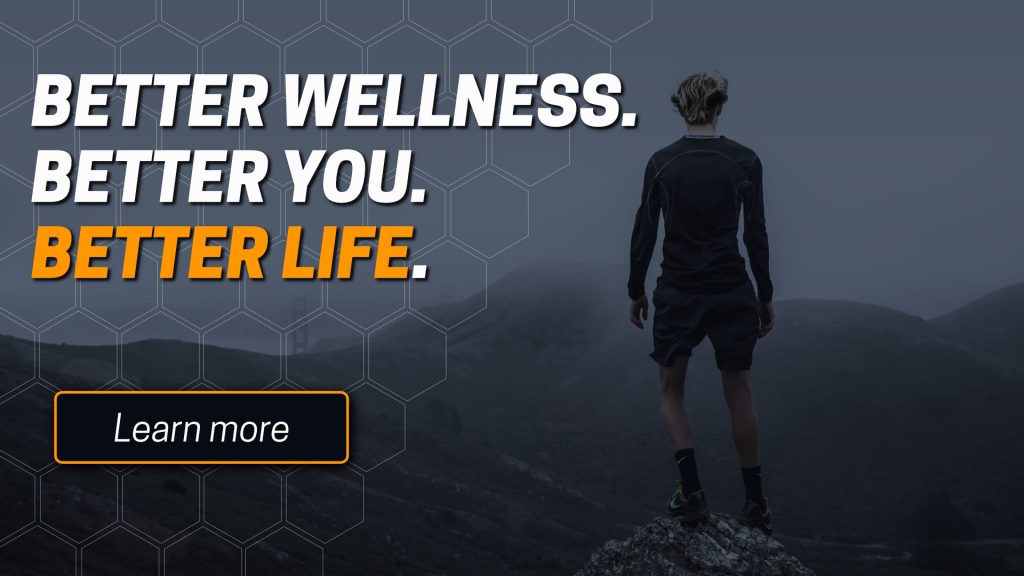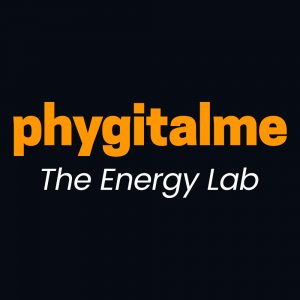Today at a Glance
Becoming the CEO of your own health, energy, and well-being is a transformative journey.
In today’s issue, we will explore seven simple steps that will empower you to lead a more balanced and fulfilling life.
You’ll discover how to optimize your physical, mental, emotional, and spiritual dimensions, unlocking your true potential.
Are you ready to embark on this empowering journey?
Let’s dive in!
The job of a CEO (Chief Executive Officer) is to lead the company to achieve its strategic goals and objectives. The CEO’s role is demanding and requires a broad skill set. Leadership, strategic thinking, communication, and problem-solving, to name a few.
CEOs are held accountable for the overall success and performance of the company and are expected to make decisions that align with the best interests of the organization and its stakeholders.
And you are the CEO of your own life.
Living a joyful life, doing meaningful work, and making decisions we don’t regret requires us to become the leaders of our own lives.
We need to…
- Think strategically about what we want to have accomplished once we’re 100.
- Communicate well with ourselves and others to achieve our objectives.
- Solve problems and overcome internal and external obstacles.
To do all of that, we need to be holistically fit, energized, and healthy. In other words, this requires us to be the best version of ourselves. Day in and day out.
Optimal health, energy, and well-being are the ideal functioning of an individual in various aspects of their life and business. It requires us to be physically, mentally, emotionally, socially, environmentally, and spiritually fit and healthy.
It’s not about the absence of disease or illness; it’s a dynamic state of balance and well-being in all these dimensions.
It’s a lifelong journey, and achieving and maintaining it requires continuous effort, self-awareness, and a holistic approach to health and wellness.
"Health is the greatest possession. Contentment is the greatest treasure. Confidence is the greatest friend."
— Lao Tzu
Monthly Mastery—Holistic Fitness
Holistic Fitness is not a fad or a new trend. It’s been around for millennia. Yoga for instance is one of the most well-documented holistic fitness systems in history. The Chinese, the old Greeks, and the Romans had theirs too. And so had the Native Americans.
They all knew for optimal performance & well-being we need physical fitness, mental clarity, emotional balance, and spiritual connection to achieve sustainable success.
Manage Energy, rather than Time to unlock Optimal Performance and Personal Well-Being
Principles first:
Balance Energy Sources
We have four primary sources of energy: physical, mental, emotional, and spiritual. To maximize performance and well-being, we must balance and renew these energy sources and create equilibrium in different aspects of life.
Replenish Lost Energy
Regular breaks and periods of recovery are necessary to sustain optimal performance and thrive in life (and business). Periods of rest and rejuvenation are essential to maintaining energy and overall well-being. Period.
Avoid Energy Depletion
Energy depletion is dangerous and often leads to burnout. It results from prolonged periods of stress, overwork, or emotional strain.
Build Energy Resilience
Balancing our energy dimensions and managing stress effectively are the key components of resilience. A resilient mind can be compared to a robust body. If we have both, we become unstoppable.
Become the CEO of your Health, Energy, and Well-Being (7 simple steps)
Optimal health, energy, and well-being require a holistic approach to managing your energy and well-being.
Here are 7 simple steps to help you incorporate these principles into your life:
Step 1: Self-Assess and Create a Life’s Vision
Peter Drucker stated, “What doesn’t get measured doesn’t get managed.”
- Identify Your Energy Sources (and Thieves): Reflect on your physical, emotional, mental, and spiritual energy sources. Assess how balanced each of these areas is in your life.
- Create a Vision: If you can’t see it, you can’t achieve it. Define a clear and compelling vision for your life. What are your core values? Your non-negotiables?What do you want to achieve? Who do you want to become?
Step 2: Balance Your Energy Sources
This becomes most powerful once you align the four dimensions to achieve your life’s vision.
Physical Energy:
→ Develop a regular exercise routine that includes cardiovascular, and strength training exercises, as well as a flexibility and mobility practice.
→ Prioritize nutritious eating by incorporating a balanced diet with whole foods.
→ Establish a consistent sleep schedule to ensure you get enough restorative sleep.
Emotional Energy:
→ Practice emotional awareness through techniques like journaling or meditation.
→ Identify emotional triggers and develop strategies to manage them effectively.
→ Cultivate positive emotions through gratitude exercises and acts of kindness.
Mental Energy:
→ Time management is about working in focused bouts of work.
→ Create a daily or weekly plan to allocate time for work, relaxation, and mental breaks. What’s not on your calendar won’t get done.
→ Minimize distractions and prioritize tasks based on importance and urgency.
Spiritual Energy:
→ Explore your values, beliefs, and sense of purpose.
→ Engage in activities that align with your spiritual values, whether it’s meditation, nature walks, or community involvement.
→ Seek regular opportunities for personal growth and self-discovery.
Step 3: Recover and Renew
What gets spent needs to be replenished. Keep your “Energy Statement” balanced. Ideally, make the “energy gained” side greater than the “energy spent”.
Scheduled Breaks:
→ Incorporate regular breaks throughout your day to recharge.
→ Plan longer periods of rest, such as weekends or vacations, to disconnect from work-related stressors.
Mindful Practices:
→ Integrate mindfulness and relaxation techniques into your daily routine, such as deep breathing exercises, mindful stretching, or progressive muscle relaxation.
→ Allocate creative time for hobbies and activities that bring you joy and relaxation.

Step 4: Avoid Energy Depletion
Your “Energy Statement” can go into “dept” for a short period of time. But you need to implement strategies to pull yourself out of the quicksand shortly after.
Stress Management:
→ Identify sources of chronic stress in your life and develop practical strategies to reduce or manage them.
Quick Win: Practice stress-reduction techniques like yoga, meditation, or mindfulness.
Boundaries:
→ Set clear boundaries in your personal and professional life to prevent stretching yourself too thin.
→ In a world of groupthink and conformists, a confident NO becomes your most powerful tool to prioritize self-care.
Step 5: Track Progress and Adjust
The concept of the “One-Degree Error” goes as follows:
Imagine you’re flying a commercial airliner on a long-haul flight from New York to Los Angeles, which is approximately 2,500 miles (4,000 kilometers) in a straight line. Let’s say your flight path is set just one degree off course when you depart from New York.
Now, at the beginning, this one-degree error may not seem like a big deal. However, as you continue flying across the country, this small deviation can lead to a significant distance from your intended destination. In fact, for every 60 nautical miles (about 69 miles or 111 kilometers) you fly, you’ll be one mile off course due to that initial one-degree error.
Over the course of a 2,500-mile flight, that one-degree error would result in the following:
- After 500 miles: You’re already 8.33 miles off course.
- After 1,000 miles: You’re 16.67 miles off course.
- After 1,500 miles: You’re 25 miles off course.
- After 2,000 miles: You’re 33.33 miles off course.
By the time you approach Los Angeles, you could find yourself tens of miles away from the intended destination.
How to avoid that error in your life:
Regular Assessment:
→ Periodically assess your energy levels and overall well-being in each dimension.
→ Review your progress toward your life’s vision and make adjustments as needed.
Flexibility and Adaptation:
→ Be open to adapting your routines and goals as life circumstances change.
→ Embrace a growth mindset that allows you to learn from setbacks and challenges.
Step 6: Seek Support
Nothing great was ever built alone. Every great mind, athlete, or entrepreneur who has ever walked this planet has built something significant on their own.
Social Support:
→ Share your goals with trusted friends, family, or ideally a group of people who share similar goals or your bigger vision. They can provide encouragement and accountability.
→ Consider seeking guidance from a coach, therapist, or mentor if needed. (You’ll find out how we can help you get started at the end of this newsletter.)
Step 7: Maintain a Balanced Lifestyle
Consistency:
→ Consistently apply the principles of health, energy, and well-being to your daily life, making them part of your routine.
Long-Term Perspective:
→ Understand that achieving and maintaining optimal performance and well-being is an ongoing process, not a one-time task.
Remember that achieving balance in your health, energy, and well-being as well as aligning it with sustainable success in life and business is a dynamic and lifelong journey. But you don’t have to walk this path alone.
That’s it for today.
Hope you enjoyed it (and learned something new).
What’s going on in our world
We’re here in Marina di Ragusa, Sicily. The weather is incredible for late September. It almost feels like summer. We enjoy the sea view from our bedroom and the mountain view from our workspace. There’s always a mild breeze carrying the salty smell of the Mediterranean Sea.
We had an inspiring call with Nicolas Fleury, Former Secretary-General and CEO of ISO, on how he implemented an employee well-being strategy while saving and rebuilding the organization.
We won our B2B pilot project with a French start-up to bring our concept of holistic fitness for optimal performance and well-being to organizations. As Nicolas has successfully shown such an employee-centered approach benefits the company massively while personally developing humans and contributing to the SDGs.
Plus, we had our second podcast interview this week. Spoiler alarm: the first one will be released soon. Ketty interviewed Dr. Neil Stanley, a world-renowned sleep expert on How to Sleep Well. We’ll keep you posted. So stay tuned

As always, stay fit, stay active, and enjoy your life.
Ketty & Markus








